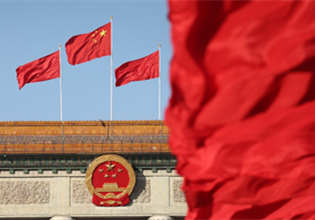Solar company takes green steps
China Merchants unit planning more power generation projects to offset slowdown
China Merchants New Energy Group Ltd said on Tuesday that it was looking to build more solar plants as part of its efforts to push into what it considers a bright spot in an industry suffering from overcapacity and price wars.
Liu Weijun, senior vice-president of China Merchants New Energy, said the company plans to acquire 1 to 2 gigawatts of solar power capacity every year in the next three to five years through acquisitions of solar plants.
"We will continue to push forward the installed solar power capacity in the coming years, because the trend is that we will make more downstream investments," said Liu from the State-owned company, a unit of Hong Kong-based China Merchants Group, a conglomerate which specializes in transportation, financial investment, and property management businesses.
Lured by the government's target to install 17.8 gW of solar capacity by 2015, State power producers such as China Huaneng Group and China Merchants New Energy are venturing into solar power generation projects for higher returns.
Despite global solar panel overcapacity, China Merchants New Energy has made three purchases of solar power projects worth more than 10 billion yuan ($1.56 billion) in just two months.
The largest deal among the three purchases was the one with Hareon Solar Corp, which agreed in May to sell 930 mW of solar energy capacity for 8.8 billion yuan to United Photovoltaics Group Ltd, a solar power plant investor and operator controlled by China Merchants New Energy.
Earlier United Photovoltaics had also agreed to acquire 170 mW of solar power installation from Zhongneng Guodian Photovoltaic Green Ecological Corp.
In July, it agreed to acquire a 100 mW solar power project owned by Hubei Jingtai Photovoltaics Power Co, which is claimed to be the largest in Hubei province in Central China. The project, already connected to the grid, has been entitled to receive a feed-in tariff, a government guaranteed purchase rate set above conventional rates.
Through these acquisitions, the company will own 40 solar power plants with an installed capacity expected to reach 2 gW across the regions of Inner Mongolia and Xinjiang Uygur autonomous regions and Guangdong province.
The ambitious expansion plan by United Photovoltaics is a reflection of the company's confidence in the solar industry's downstream business, which offers stable investment returns even when prices of photovoltaic products have suffered steep decline in recent years.
"Though there is excessive production in the upstream business, the downstream side of the solar industry is growing and offering better returns for solar power station investors and operators, thanks to the government's support and falling installation costs," Liu said, adding that one of their strengths is risk-control and financing capabilities.
Experts said downstream businesses generally offer annual gross returns of around 10 percent, but largely rely on debt financing and project location. In addition, a lot of solar power generated in China's western regions is wasted as some solar power stations cannot be connected to the national grid.



 Print
Print Mail
Mail





